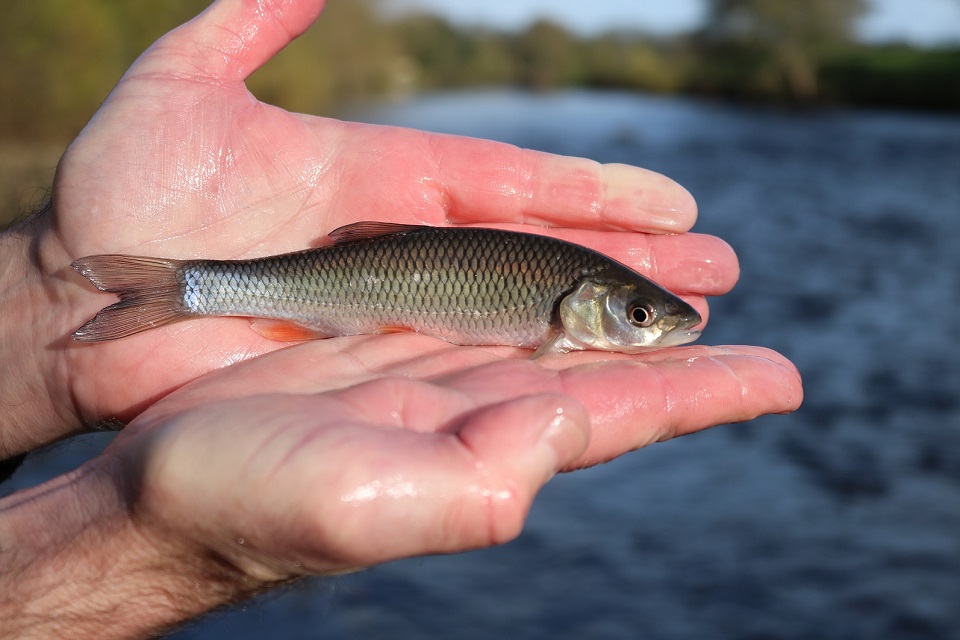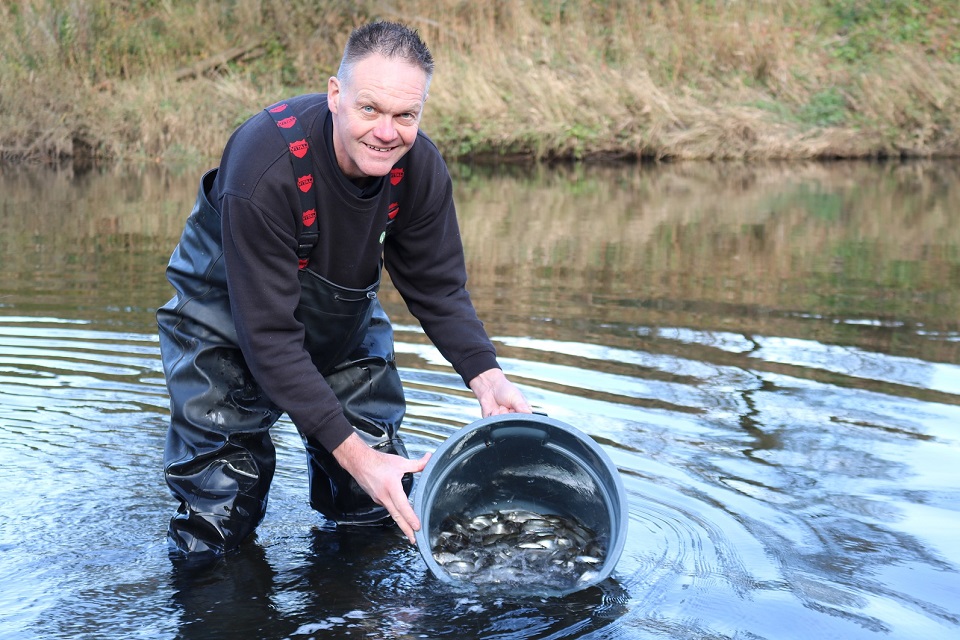Press release: Thousands of fish released into rivers
The Environment Agency has released 8,000 young fish to give fish stocks a boost in north east rivers.
The chub and dace were released on Thursday, 9 November into the River Tees at Low Coniscliffe and River Wear at Maiden Castle.
It’s part of the Environment Agency’s ongoing plan to develop and restore rivers in the region, targeting those which have been affected by pollution or where barriers affect fish passage.
Fisheries experts will release a total of 30,000 fish over the next two weeks in rivers and Stillwater fisheries in the north east. As well as the Tees and Wear, fish will be released into the Skerne near Darlington and the Team at Gateshead.
The fish – chub, dace, roach, bream, tench, rudd and crucian carp – were all reared at the Environment Agency’s fish farm near Calverton, Nottinghamshire, using funding from rod licence sales.

Commitment to anglers
Alice Fitch, Fisheries Team leader for the Environment Agency in the north east, said: “We are pleased that we can provide these fish for stocking as part of our commitment to rod licence paying anglers. Restoration and the creation of new fisheries for all people to enjoy is a very important aspect of our work.”
The Environment Agency releases fish into our waterways annually. Fisheries officers target fish stocking activity using data from national fish surveys to identify where there are problems with poor breeding and survival. Releasing fish helps the process of natural recovery in waters which have been impacted by pollution or suffered poor water quality.
Alice added: “Restocking is one of many things we do together with our partners to develop fisheries, including reducing the effects of pollution, improving habitat and removing barriers to fish migration.”

Improved water quality
Many of our industrialised rivers have improved dramatically in water quality in the last 30 years and targeted and appropriate restocking has helped the restoration of natural fish stocks and viable fisheries.
Angling is a great way for everyone to keep healthy and enjoy the natural environment. All rod licence income is used to find work to protect and improve fish stocks and fisheries.
Anyone who wants to go fishing needs to buy a rod licence. A full annual licence costs £30 (short term and some concessionary licences are also available) and are available online